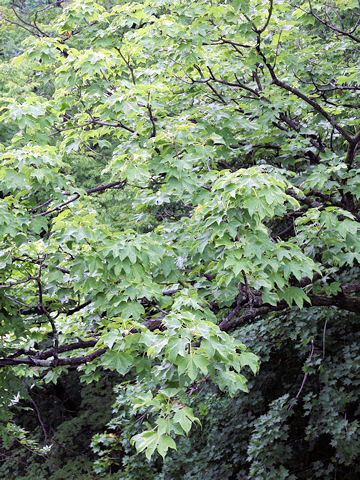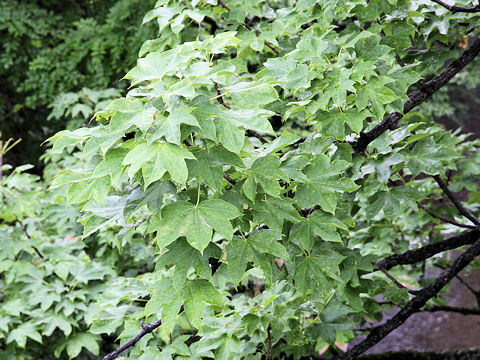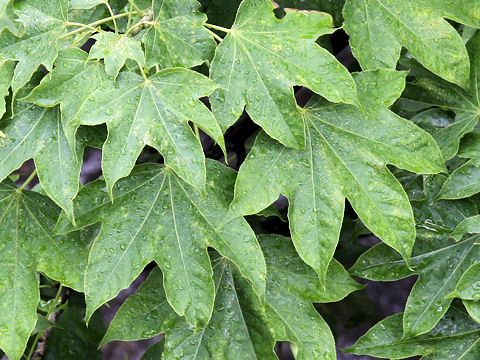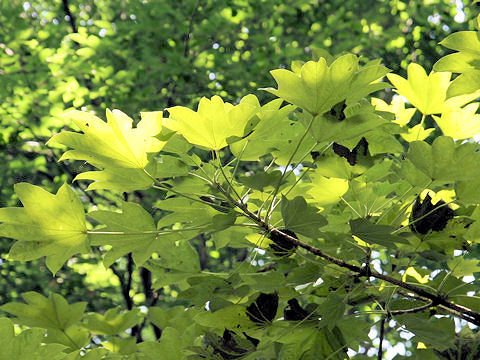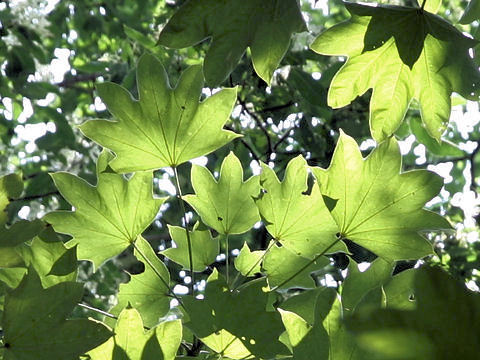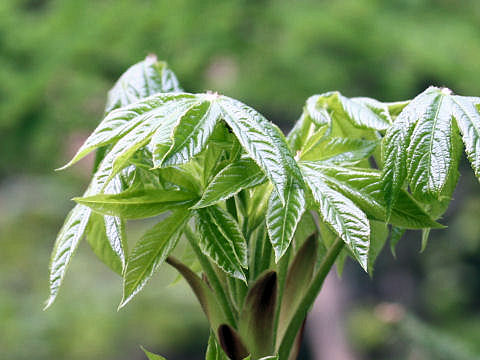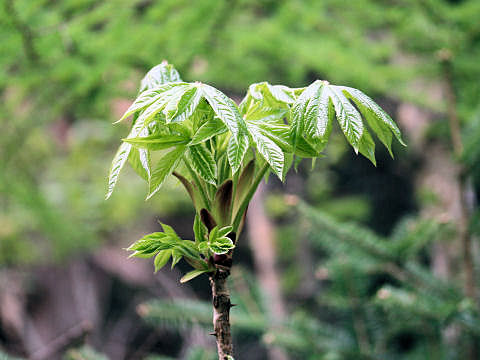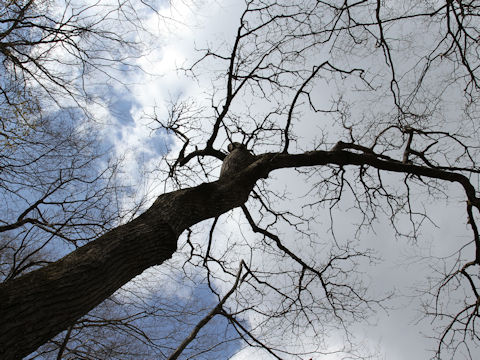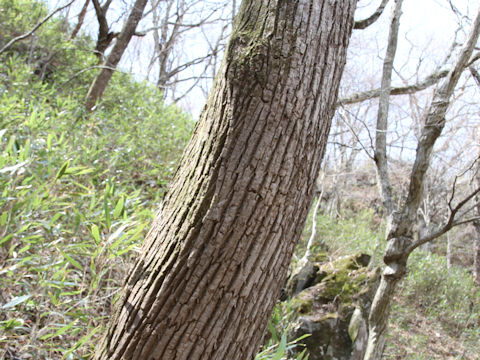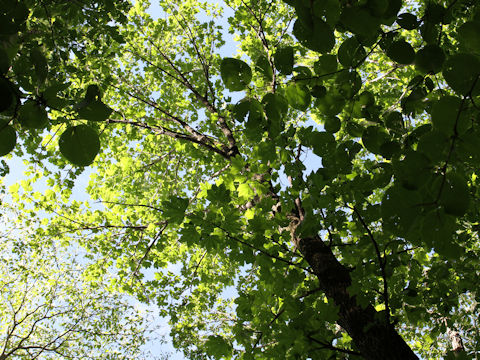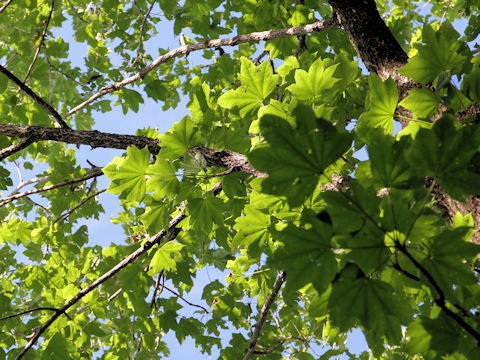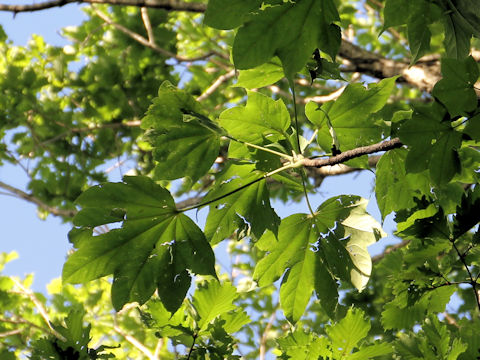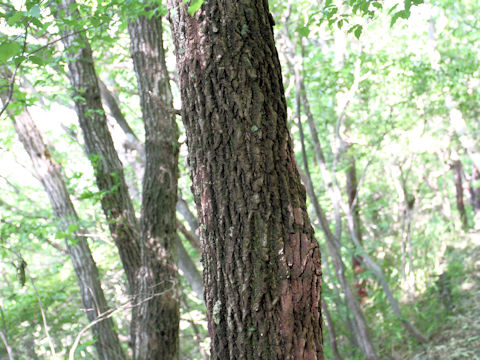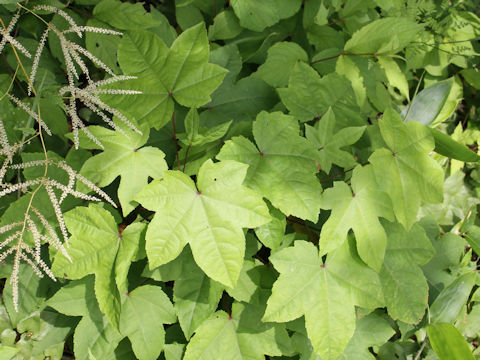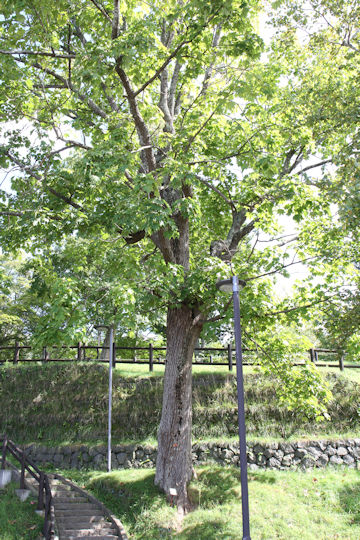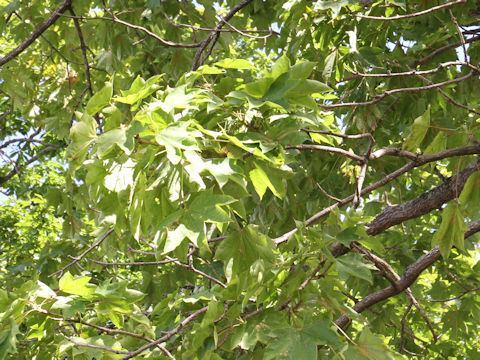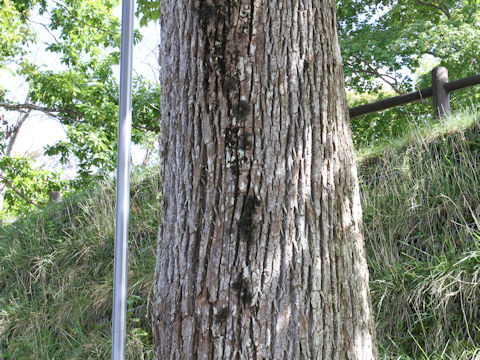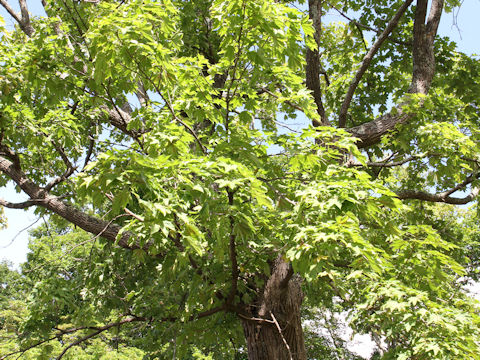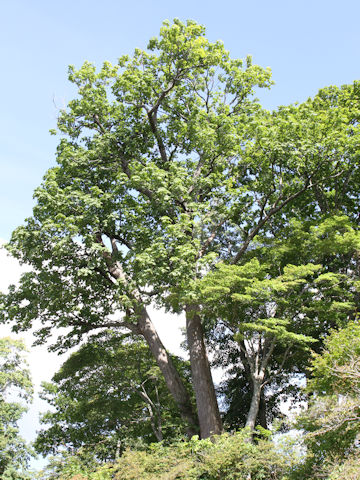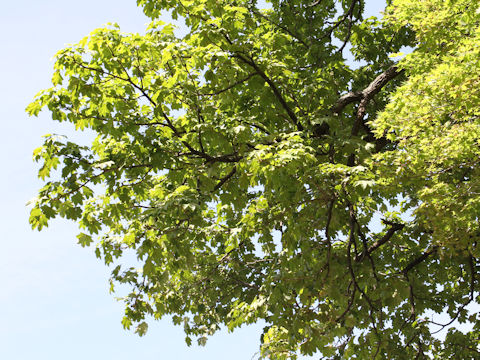
|
|
|
|
−− もっと見る(Show more)−−
−− 閉じる(Close) −−
|
|
|
|
わが国の各地をはじめ、朝鮮半島や中国、サハリンに分布しています。丘陵から山地に生え、高さは25メートルほどになります。樹皮は灰白色で、老木になると縦に割れ目が入ります。枝には棘が生え、葉は円形で掌状に5〜9裂して、枝先に集まってつきます。7月から8月ごろ、枝先に散形花序をだし、小さな黄緑色の花を咲かせます。赤紫色の葯が目立ちます。果実は液果で秋に黒く熟します。若芽は山菜として利用されます。また「きり」に似た材は家具用に加工され、アイヌの人々はこの木で舟を造ったそうです。別名で「せんのき(栓の木)」とも呼ばれます。中国語では「刺楸(ci qiu)」と呼ばれます。 |
|
|
ウコギ科ハリギリ属の落葉高木で、学名は Kalopanax pictus (syn. Kalopanax septemlobus)。英名は Castor aralia。 |
|
|
The Castor aralia (Kalopanax pictus) belongs to Araliaceae (the Ginseng family). It is a tall deciduous tree that is native all over Japan, the Korean Peninsula, China and the Sakhalin. This tree grows in hillsides or mountains and can reach about 25 m in height. The barks are grayish-white and furrowed longitudially when old. The branches have spines. The leaves are round, devided into 5-9 lobes palmately and crowded at the terminal branches. The umbels are borne on the terminal and bloom small yellowish-green flowers from July to August. They have conspicuous magenta anthers. The fruits are berries and ripen in black in fall. The young shoots are used for wild vegetable, and the timbers are used for furnitures. In Chinese, it is called "刺楸" (ci qiu). |
|
|
[上・中1〜2] 山形県小国町小玉川にて、2008年07月11日撮影。 [中3・中4] 大阪府交野市「大阪市大付属植物園」にて、2007年06月21日撮影。 [中5・中6] 長野県安曇野市穂高有明「中房渓谷」にて、2006年06月02日撮影。 [中7・中8] 福島県古殿町「鎌倉岳」にて、2014年04月19日撮影。 [中9〜中12] 栃木県那須町湯本にて、2017年06月09日撮影。 [中13] 岩手県雫石町「犬倉山」にて、2019年07月11日撮影。 [中14〜18・下] 北海道千歳市「支笏湖」にて、2020年09月22日撮影。 |

|
|
Shu Suehiro |
